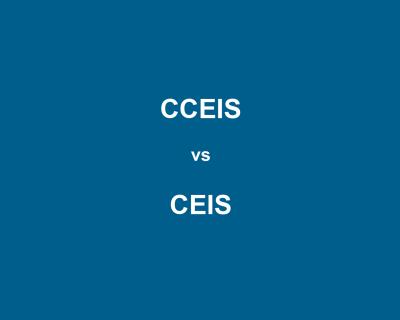
Resource Library
Guides. Briefs. Toolkits. Quick reference information. IDC and its partners created these data quality resources to help states better prepare to address their existing or emerging IDEA data quality needs. Use our search and filtering tools to navigate the library.
Resources 1 - 7 of 13
Format: Quick Reference
A Comparison of Mandatory Comprehensive Coordinated Early Intervening Services (CCEIS) and Voluntary Coordinated Early Intervening Services (CEIS)In December 2016, OSEP finalized new regulations on significant disproportionality (34 CFR §300.646). These regulations enforce the use of IDEA funds for mandatory CCEIS, which LEAs provide upon identification of significant disproportionality, and distinguish use of funds for CCEIS from the use of IDEA funds for voluntary CEIS. This resource is a handy chart that outlines the differences between CCEIS and voluntary CEIS.
Format: Quick Reference
Checklist to Identify and Address SSIP Data Quality IssuesIn State Performance Report/Annual Performance Plan (SPP/APR) reports, states are required to identify data quality issues that may have arisen during their Indicator 17 State Systemic Improvement Plan (SSIP) work. Using this checklist can help state staff who are responsible for the SSIP apply the principles of high-quality data to identify any data quality issues that the state should report. The checklist includes questions that states can ask themselves to recognize data quality issues that may exist. It provides potential consequences of the issues and offers suggested actions that states can take to address the issues.
Format: Guides and Briefs
Considerations for Making Changes to SIMR Baseline and TargetsThis white paper focuses on considerations that could lead Part C or Part B state agencies to propose a change in their SIMR baselines or targets. It defines baselines and targets in the context of SSIP, illustrates the importance of baselines and targets, and provides reasons for a state to propose changing its baselines or targets.
Format: Applications and Spreadsheets
Coordinated Early Intervening Services (CEIS) Fiscal and Student Data TrackerThe Coordinated Early Intervening Services (CEIS) Fiscal and Student Data Tracker is a set of four tools SEAs can use with their districts, schools, and providers to assist them in tracking the finances, services, and student data associated with CEIS. IDC and CIFR produced the CEIS Tracker. The resource also includes an instructions document or user's guide for more information about when and how to use the CEIS Tracker.
Format: Applications and Spreadsheets
Data Sources for Calculating Significant DisproportionalityData Sources for Calculating Significant Disproportionality provides a summary of the data needed to calculate significant disproportionality for identification, placement, and discipline. For each category of analysis, this resource provides a description of the data needed to calculate the risk numerator and risk denominator, and notes the relevant EDFacts file specifications, including which subtotals or category sets, as appropriate.
Format: Quick Reference
Due Dates for SY 2022-23 IDEA DataIDC updates this list of EDFacts Submission System (ESS) files and EMAPS submissions due dates for SY 2022-23 so you don't have to! Download it and pin it to your refrigerator where it'll help you stay cool.
Format: Guides and Briefs
FFY 2020–25 Part B SPP/APR Changes at a GlanceThe FFY 2020–25 Part B SPP/APR Changes at a Glance resource is a quick overview for tracking updates to indicators in the new FFY 2020–25 SPP/APR package. For each of the 17 SPP/APR indicators, the table denotes whether there will be no changes, minor changes and/or clarifications, changes to response rates and representativeness, changes to data sources, and new components.








